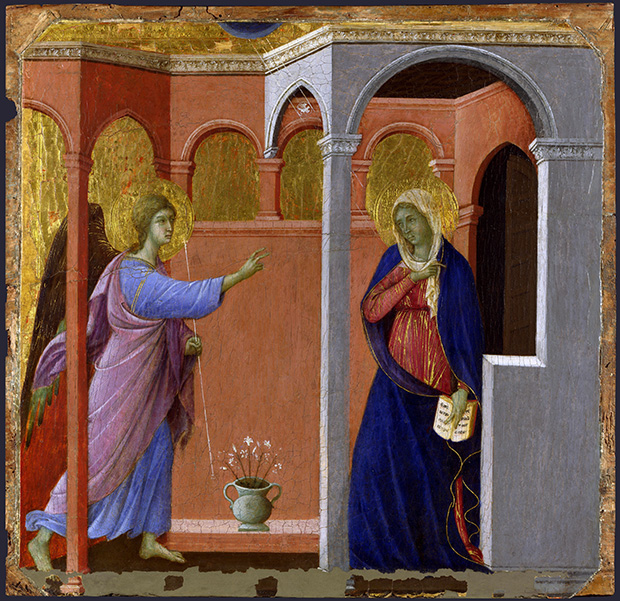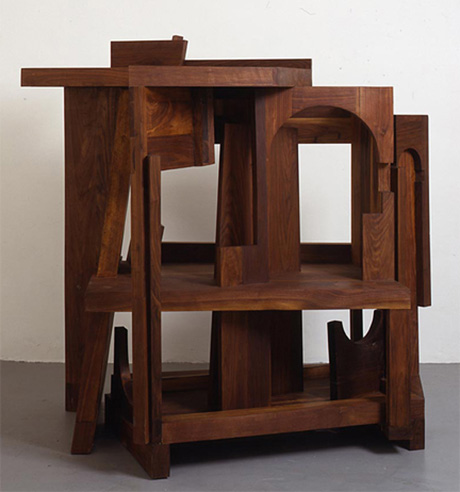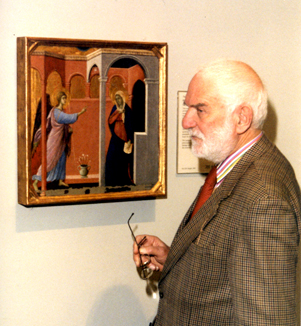
Anthony Caro on his love of the Duccio Annunciation
We highlight the sculptor’s love for this work, due to be exhibited alongside his, in a National Portrait Gallery show
In our canonical book on art history, The Story of Art, EH Gombrich describes the Italian late thirteenth and early fourteenth century painter Duccio di Buoninsegna as the greatest master of his generation. Yet what does a work, such as his altar piece The Annunciation mean to latter-day artists?
The painting, originally made for Sienna’s cathedral between 1307 and 1311, was thought to have formed part of one of the richest and most complex ecclesiastical decorations in Christendom. It depicts the Angel Gabriel’s appearance before the Virgin Mary, to tell her that she would become the mother of Jesus, and since 1883 it has belonged to Britain’s National Gallery.
This work forms part of the gallery’s late medieval collection and is not currently on display. However, later this month, it goes back on show again beside a piece inspired by the Annunciation, created by the late British sculptor Anthony Caro.
Caro made his Duccio Variations between 1999 and 2000, after the National Gallery invited him and other contemporary artists to respond to works within their collection. Although Caro was born into a Jewish family and was, broadly speaking, classed as a Modernist, he developed an appreciation for Christian art. However, during his lifetime, he was keen to stress that his Duccio Variations were inspired not by religious ecstasies, but more by a response to the older work’s beauty.
“The Duccio Annunciation is a painting with feelings of love,” he says in our monograph. “It’s a delicate, almost feminine picture. I like the architecture in it. It is very still. When I started I decided to concentrate on the architecture in the picture.”

There are other aspects of the painting that Caro liked too, including the vase of lilies, supposed to signify Mary’s purity. “The vase and the flowers are very important,” he went on. “They are a central aspect of Duccio’s painting – everything in it points to the flower vase.”
Caro’s variations are hardly copies of Duccio’s work, and the sculptor preferred to think of the painting as “a taking-off point, like the original theme in a set of musical variations.”
He executed these pieces in bronze, cast iron, steel and walnut wood, and it is the walnut work, Duccio Variations No. 3, that will go on display later this month in an exhibition that the artist would surely have enjoyed.

Caro says in our monograph, that he thought it was “wonderful” to show old and new works alongside each other. “Art’s a growing thing,” he explained. “As a contemporary artist, you’re matching yourself with a pretty high standard, and you’ve got to try and measure up. Looking at art awakens, speaks to, the creative part of you, the spectator. It digs deep into the best part of people. And art has the potential to change people. I have always thought that.”
An apt consideration to bear in mind later this month at the London gallery. For more on the exhibition, Art in Dialogue: Duccio | Caro which opens 13 June runs until 18 November, go here; for greater insight into the life and work of this important artist buy a copy of our masterful Caro monograph here.